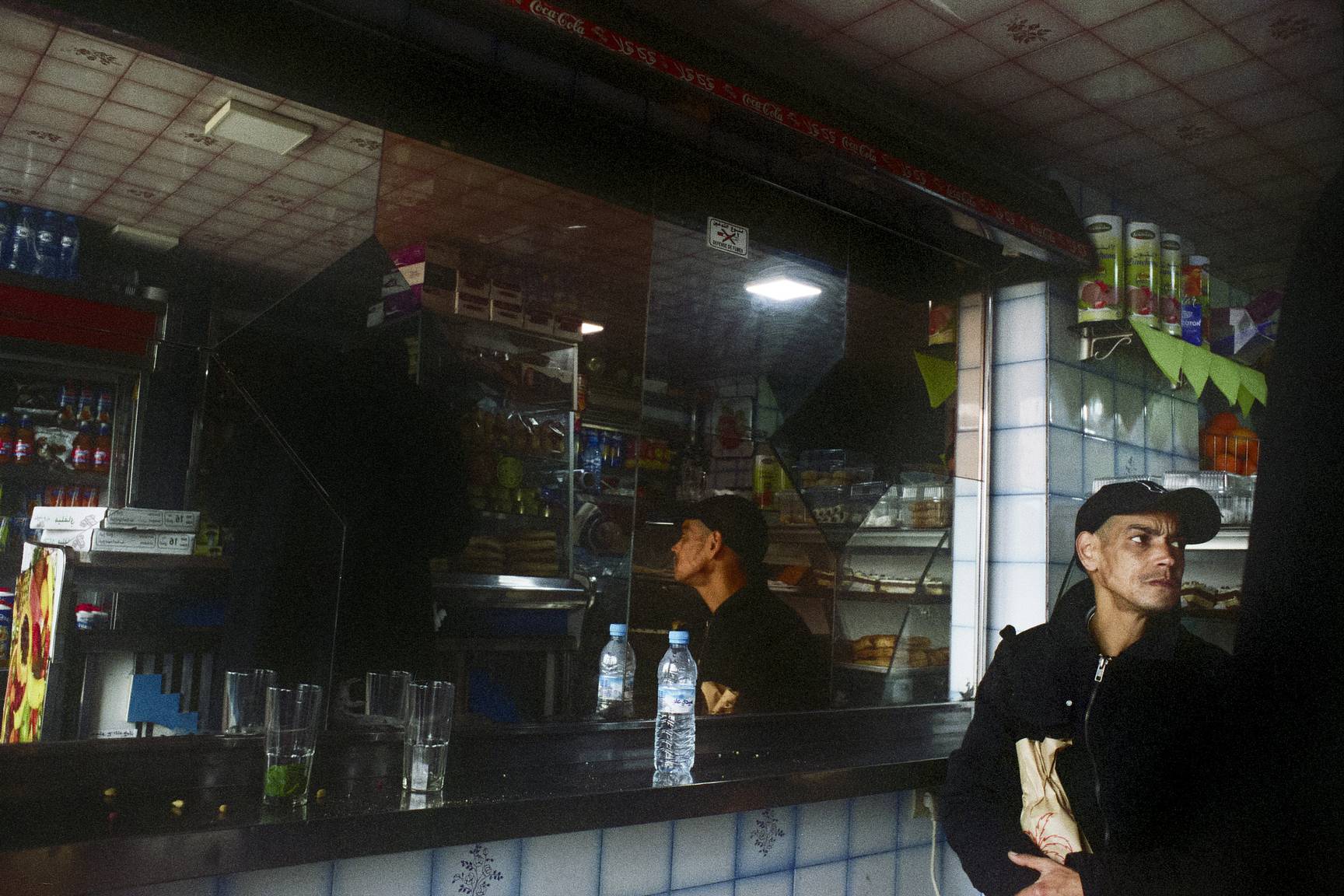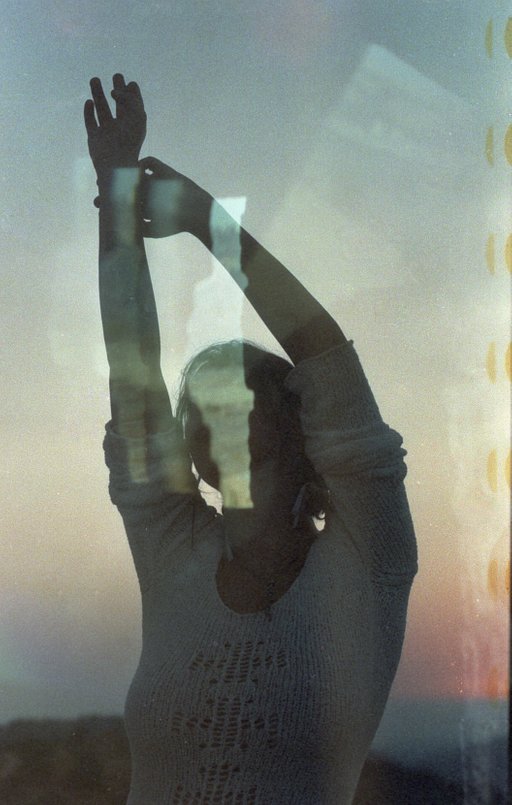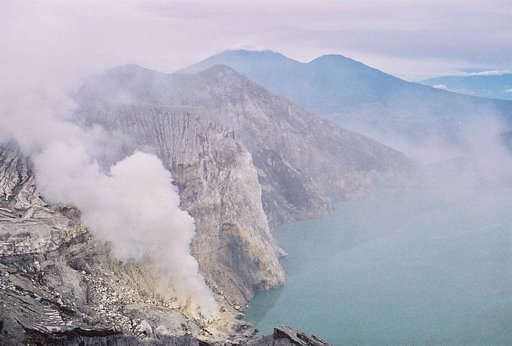I Have a Clementine in One Hand and a Young Black Goat in the Other
2 Share TweetMombao is a duo made up of Damon Arabsolgar (Iran/Italy/Germany) on synthesizer and Anselmo Luisi (Italy/Slovenia) on drums. They mix heavy rhythms and big soundscapes, jumping from electronica to jazz using just two instruments, and play everything live on stage. Their aim is to create music that can be trans-territorial and trans-genre. Their performances, with the stage in the center of the room, are something in-between an ancient mystic ritual and a modern rock concert.

After touring extensively around Italy, Croatia, Serbia, Bosnia, and Kosovo, American Language Centers made it possible for Mombao to head to Morocco and join forces with the Gnawa master Abdellah Boulkhair El Gourd. This allowed them to explore the possibilities of mixing their western conception of music with the north-African way of paying respect to their traditional roots.
Using an old camera that used to belong to Anselmo’s grandfather, Damon took amazing analogue pictures of their travels. Here, he shares a surreal story about their experience in Morocco.
I have a clementine in one hand and a young black goat in the other.
As for the former, I know for sure that you can peel it easily: it was cultivated on a hill above Agadir, the Moroccan oceanic coast and caught this morning by Hassan, our frightfully flat-headed taxi driver. And the latter — I know little or nothing, perhaps because I have no great experience with either kids or goats that climb and set up in trees. This kid clearly belongs to the specimens around me, one of the dozens of ungulates and bearded animals that are scrutinizing me with superiority from the top of the tree.
Its belly is soft and warm and he almost seems to wait for the shepherd’s approval before proceeding with any action. The shepherd in question, however, is a strange cross between a fisherman and a rapper with a black jellah and a well-finished mustache. He seems more interested in letting the passing drivers drop money than protecting the soft stomach of his goats.
I stop.
I see the taxi, highway, indigo sky and red ferruginous mountains, Anselmo and the goats on the tree. I swallow the last segment of the clementine and realize that if I tried to imagine a better reality than this I would fail.
This tour is a continuous relaunch, and leaves us unarmed in front of the unpredictability of these endless and intense days. We were in Morocco — and by "we” I mean Mombao, a duo composed of me at the synthesizer and Anselmo Luisi on drums. We play an undefined genre for an equally heterogeneous public, and for a year we have been crossing borders, proposing an increasingly transnational, transcultural, trans-genre and transgenic sound, something that could be of all places or none. If we were to place it in a space-time chart, we would place it at several points at the same time.
We try to cross borders, blend them, and make clear what they really are — a very slow toning, a limit of x that tends to infinity, a useless distinction of customs between two similar countries.
We landed a week ago in Casablanca, and we have been performing a little anywhere between Tangier, Marrakesh, Kenitra, Agadir, Mohammadia and Meknes, holding workshops of body percussion, composition, recording and — of course, concerts.
We were halfway through this experience, and didn’t know that this series of continuous unpredictable relaunches would take us to Tangier, a city permeated by magic, for a mystical musical experience par excellence, playing in a Gnawa community and experiencing a syncretism between Islam, a tradition of sub-Saharan slavery, and pre-Islamic Sufi mystical roots.
It may sound complicated but the concept at the base is quite simple: sub-Saharan populations who were enslaved carried on their tradition in North Africa, mixing themselves with the Islamic culture and finding a solid meeting point in a kind of mystic trance.
Imitating the sound of the horses they rode while being deported, with the chains on their feet, sub-Saharians created this repetitive rhythm, a continuous and ever more insistent gallop. As in a herd of horses, the leader is constantly at the limit of their physical strength, never separating themselves from the group but playing together, thus remaining even more united.
From the chains at their feet, slaves most likely developed the krakreb, a huge double iron castanet whose clanging sound is hardly bearable, even when being made by a single instrument alone. Imagine what it can mean to be inside a semicircle of about twenty musicians who play them to the maximum of their strength. At the peak of their ride, the deafening noise burns your ears and defeats every attempt to focus on your thoughts.
The krakreb are accompanied by the ghimbri, a three gut-stringed instrument always tuned in D and an ancestor of the banjo. It is amplified by a "Mesa-Boogie" valve amplifier from the seventies and beaten by the Mahlehm Abdellah Boulkhair El Gourd, a man of about eighty-three years with blue eyes and an otherworldly smile. In the past, he has played all over the world, achieving a Grammy nomination in 1996 with Randy Weston and his friend Archie Schepp, as well as a handful of other music masters.
From him, we discovered that in the seventies, artists such as Jimi Hendrix, the Beatles, Rolling Stones, Grateful Dead and all those who left the blues and who, through the mystical trance and the use of psychoactive substances, rediscovered the root of a more archaic music of pentatonic and swinged rhythms — they all came to learn the Gnawa.
The Mahlehm welcomed us into his community, set up our drum-set and synthesizer, then played with us and the whole community for two unforgettable evenings from which we came out starstruck and full of awe.
The community is not the cliché of the tent in the desert — rather, it is an old Portuguese fortress once used as a mortuary in the center of the Medina, in front of the cannons that once were defending the port. The walls are covered with flags, tapestries, paintings, posters, and covers of jazz records on which someone from the community has played. The people are not old gurus dressed in white but normal guys muffled in North Face jackets.
They warned us that the worst place to stay in January was not the Nordic countries, with their ultra-efficient stoves and double-glazed insulating windows but, counter to all expectations, Morocco, the country with the greatest scarcity of heaters I have ever seen. They told me: "It is always so hot we don’t need heaters". Except in winter, where you end up eating cous cous at lunch, at home, or even outside bundled up in a coat. My ears are out of order, I cannot hear what's happening anymore. In a few minutes of shortness of breath, I see herds of horses running and blocks of frosted blue and green glass in the air.
We break another boundary and then another and at the apex of this impossibly driving rhythm, in the corner of my eye I see the most beautiful image of this experience:
The Mahlehm has risen and with a supernatural calm is pointing some delicate steps of dance in front of us, in the middle of the semicircle of musicians.
We end up exhausted, with racing hearts, between the humming of unusable eardrums and the uncertainty of not knowing what really happened.
On my right, two sisters moved; the ghimbri hangs up undaunted as if nothing had happened. Not to lose the flow, to rise again and to run towards the sea. There in the blue, where the Gnawis say we will embrace our lost brothers.
Thanks to Katherine Akey who gave me the meraki to publish this. Thank you to Lomography, Rosa Gerhards from Alright Gandhi, Victor Herrero, Sonia Cooke, Zacharia Alilech, Anselmo Luisi, Katherine Akey, Rosa Cinelli, Mahlehm Abdellah El Gourd and the community “Der Gnawa”, Sergio, all the ALC people, Marta Clinco, Sarah Ariche, Morsi Hassanin, Hassan the clementine grower, and ElYazid Alami.
All the pictures are shot by Damon Arabsolgar except for the ones in which he is in, shot by Anselmo Luisi. Post-production by Rosa Cinelli and Damon Arabsolgar. Written reportage by Damon Arabsolgar.
To discover more, follow Mombao and Damon Arabsolgar on Instagram.
written by Damon Arabsolgar on 2018-10-30 #places #music #morocco #mombao #gnawi
































No Comments